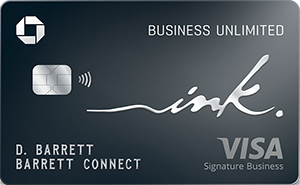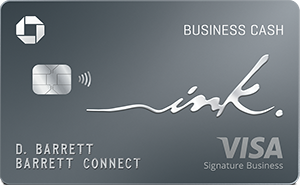Beyond Freelancing: Building a Business from Your Freelance Skills
KEY POINTS
- Create a business plan that outlines your goals and the steps to achieve them.
- Consider which type of business structure makes the most sense for your business.
- Set up the finances and make plans to outsource tasks you don't enjoy.
Today, millions of people are embracing the gig economy, where they can turn their skills into freelance income. They're enjoying the freedom and flexibility to work when they want and take on jobs that excite them.
Over time, however, the limitations of freelance work can hold you back. For example, the unpredictability of income can make sticking to a budget difficult. Freelancing can also cap your income because there are only so many hours in the day. Even if you're earning a high hourly rate, you can't create more time.
Whether you're a graphic designer, dog walker, developer, or any other kind of freelancer, there are actionable steps you can take to turn your side hustle into a thriving business. It starts with changing your mindset.
Shift your mindset
The first step to becoming a business owner, rather than a freelancer, is shifting your mindset. Freelancers tend to be focused on day-to-day operations, such as which projects they need to complete and what emails to send. But business owners focus on the long term. They're creating budgets, building processes that scale, and thinking strategically about growth.
Starting today, think of yourself as a business owner, not just a freelancer. You aren't just in charge of responding to that email; you're responsible for building the future of your company.
Decide on a legal structure
There are several types of business structures, and the format you choose will depend on the state in which you operate, whether you have business partners, and the overall risk of your business. For example, if you own a home repair company with a partner, you may want the liability protection of an LLC, while a solo graphic designer might choose a sole proprietorship.
Why a Business Credit Card Could Transform Your Small Business
These business credit cards that offer a convenient and efficient way to separate personal and business expenses, simplifying accounting and tax reporting.
Additionally, business cards can provide valuable perks such as rewards points, cashback, and expense tracking tools, enhancing financial management and the potential to help save money in the long run.
| Offer | Our Rating | Welcome Offer | Rewards Program | APR |
|---|---|---|---|---|

Ink Business Unlimited® Credit Card
Apply Now for Ink Business Unlimited® Credit Card
On Chase's Secure Website. |
Rating image, 4.50 out of 5 stars.
4.50/5
Our ratings are based on a 5 star scale.
5 stars equals Best.
4 stars equals Excellent.
3 stars equals Good.
2 stars equals Fair.
1 star equals Poor.
We want your money to work harder for you. Which is why our ratings are biased toward offers that deliver versatility while cutting out-of-pocket costs.
|
Earn $750 bonus cash back Earn $750 bonus cash back after you spend $6,000 on purchases in the first 3 months from account opening. | Earn unlimited 1.5% cash back on every purchase Earn unlimited 1.5% cash back on every purchase made for your business |
Intro: 0% Intro APR on Purchases Purchases: 0% Intro APR on Purchases, 12 months Balance Transfers: N/A Regular: 18.49% - 24.49% Variable |

Ink Business Cash® Credit Card
Apply Now for Ink Business Cash® Credit Card
On Chase's Secure Website. |
Rating image, 4.50 out of 5 stars.
4.50/5
Our ratings are based on a 5 star scale.
5 stars equals Best.
4 stars equals Excellent.
3 stars equals Good.
2 stars equals Fair.
1 star equals Poor.
We want your money to work harder for you. Which is why our ratings are biased toward offers that deliver versatility while cutting out-of-pocket costs.
|
Earn up to $750 bonus cash back Earn $350 when you spend $3,000 on purchases in the first three months and an additional $400 when you spend $6,000 on purchases in the first six months after account opening. | Earn 5% cash back in select business categories Earn 5% cash back on the first $25,000 spent in combined purchases at office supply stores and on internet, cable and phone services each account anniversary year. Earn 2% cash back on the first $25,000 spent in combined purchases at gas stations and restaurants each account anniversary year. Earn 1% cash back on all other card purchases with no limit to the amount you can earn. |
Intro: 0% Intro APR on Purchases Purchases: 0% Intro APR on Purchases, 12 months Balance Transfers: N/A Regular: 18.49% - 24.49% Variable |
The main types of business structures are sole proprietorship, partnership, and LLC. A sole proprietorship is the simplest form of business and doesn't require any paperwork at all. A partnership is a type of business with more than one owner and also doesn't require any paperwork. Finally, an LLC, or limited liability company, creates a separate legal entity for your business. This protects your personal assets and can offer some tax advantages.
Take the time to research how the different types of business structures work in your state before making a decision for which type to use.
Create a business plan
A business plan serves as the blueprint for the business you want to build. It outlines your business goals and the specific steps you will take to reach those goals. It should include a brief introduction of your business, a mission statement, organizational structure, and a list of the products or services you'll provide. You'll also want to include market research, the specific products or services you'll be using, and your marketing and sales strategies.
Take the time to write a detailed business plan. This will help you clarify your overall goals and plan the specific steps you'll take to turn your freelance gig into a real business.
Set up financials
The shift from freelancer to business owner requires taking a different approach to finances as well. You're not just earning an income as a business owner -- you're managing business finances and thinking about the long term. This could mean opening a company checking account. You might want to consider getting a business credit card, too.
How much will you invest in marketing? What long-term goals do you need to save capital for? How will you budget your profits? It may be worth consulting with a financial advisor to plan for your business's future.
Outsource and scale your business
As a freelancer, you're doing most of the work yourself. As a business owner, you need to delegate at least some tasks. Think about what tasks take up most of your time, that you don't like doing, and don't require a high level of industry knowledge, and hire someone else to do them.
If you have a drop-shipping company, can you hire someone else to manage the blog or write your emails? Or maybe you like writing blogs but want someone else to handle uploading them to WordPress. Look for ways to automate or organize your business processes. For example, calendar tools like Calendly make it easier to manage your schedule, while using the right customer relationship management (CRM) software will help you manage client contacts. Keep in mind that this should be a slow transition. Start by choosing one or two tasks that take up a lot of your time and look for ways to outsource or automate them.
Following these steps will help smooth the transition from a freelancer to a business owner, but remember, it's a process. Take the time to try new things and build a strong foundation for your business before hiring and expanding.
Our Research Expert
We're firm believers in the Golden Rule, which is why editorial opinions are ours alone and have not been previously reviewed, approved, or endorsed by included advertisers. The Ascent, a Motley Fool service, does not cover all offers on the market. The Ascent has a dedicated team of editors and analysts focused on personal finance, and they follow the same set of publishing standards and editorial integrity while maintaining professional separation from the analysts and editors on other Motley Fool brands.
Related Articles
View All Articles